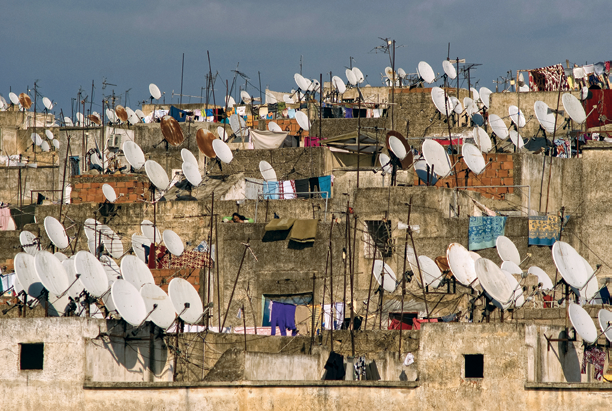Africa’s fast evolving broadcast entertainment landscape has seen a surge in demand for content and Over-The-Top (OTT) solutions, which are widely promoted as the future of broadcast.

As audiences demand improved image definition however, questions have emerged around whether the broadcasting industry can deliver the content in optimum quality at the convenience of the viewers, irrespective of where they are located. Combining linear TV via satellite and on-demand services via OTT offers a viable solution to this challenge.
The Market
International OTT players have arrived across Africa, The launch of the likes of Amazon Prime and Netflix are posing a challenge for broadcasting operators who are looking to develop revolutionary services that are responsive to the audience’s need for accessible and high quality content.
This has given regional players an opportunity to capitalize on the growing OTT trend. Live coverage of events, particularly sports, has been the key driver for OTT services in the region.
Over time, however, telecom operators, media companies, broadcasters and pay-TV operators seem to have actively exploited the potential of the OTT market by launching standalone services as well as services that complement their existing setups.
OTT services depend on a shared network, where the bandwidth is used by a number of services. This can lead to quality issues when large amounts of internet bandwidth are consumed.
During peak hours, and for popular content such as sports or TV series, OTT distribution amplifies network overloading which can cause buffering, delays, poor picture quality and even loss of service.
Obviously, this has a major impact on customer satisfaction. Should broadcasters choose a hybrid satellite/OTT delivery solution?
The Solution
Satellites are a particularly cost-effective way to reach large numbers of viewers, particularly in regions with widely dispersed populations and challenging environments.
Satellite covers all households within the footprint, including those unable to access OTT services due to insufficient internet bitrates. This enables the service provider to supply all customers with a similar instantaneous service across regions.
While OTT costs rise with the number of viewers, satellite costs remain fixed, making it a more cost-effective solution for broadcasters.
We’re seeing strong growth in satellite TV, with a recent Digital TV study of Sub-Saharan African payTV subscribers showing satellite and terrestrial television are the two infrastructures driving digital migration, with 19 million homes receiving via satellite; a number that will increase by another 7 million by 2022.
There are also changes on the horizon. We are also noting a move toward hybrid solutions involving both DTH and OTT, with OTT often used in addition to traditional services, for viewers seeking on demand content as well as specific live programming.
Combining the best of both worlds, a hybrid offering of linear TV via satellite and on-demand services via OTT offers the most viable, future-ready solution to deliver a rich portfolio of video content.
By enabling broadcasters to reduce the complexity and cost of their operations in a new digital world, they continue to enhance satellite efficiency, enabling clients to maximize their service potential while minimizing the complexity of doing so.

Hybrid satellite OTT solutions will deliver an enriched viewer experience through live channel broadcasting, channel numbering, program information, content security, subscriber and set-top box management.
Furthermore, the seamless and integrated multi-screen user experience service that comes with the hybrid satellite-OTT solution has a complementary element that brings together the strengths of the traditional DTH broadcast service simultaneously with OTT streaming.
The feature allows the audience to receive content on mobile devices, tablets or laptops with access to multiple programs that can be recorded and rewound as well provide an array of program information.
www.eutelsat.com


